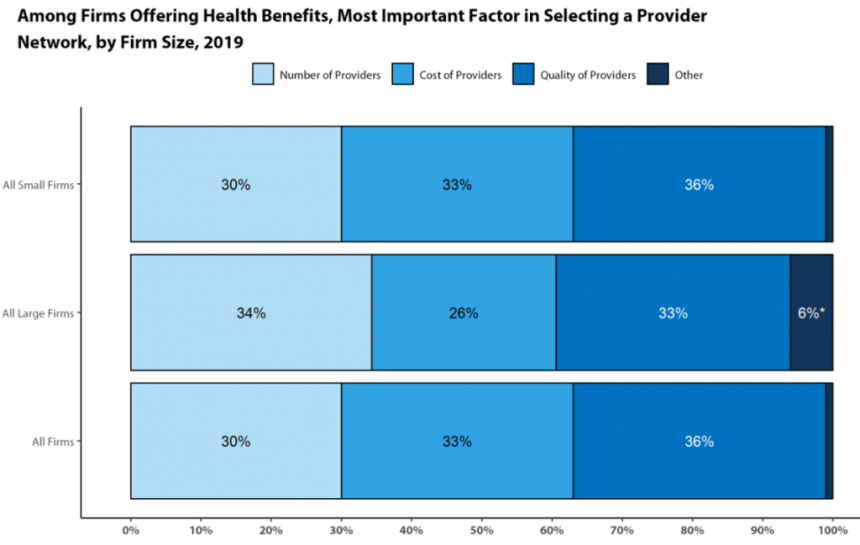Patients often dislike narrow networks because they limit their choice of physicians and hospitals. Americans value having more options when it comes to their healthcare providers.
On the other hand, payers prefer narrow networks as they can negotiate lower rates, leading to cost savings, and potentially higher quality if the contracted network includes top-rated physicians. The KFF Employer Health Benefits Survey highlights how both cost and quality play a crucial role in choosing a provider network.


A critical question to answer is how much money do narrow networks actually save for health plans? A study by Dafny et al. (2017) seeks to address this question by analyzing data from the Robert Wood Johnson Foundation HIX Compare on silver-tier health insurance plans offered on the 2014-2015 ACA Marketplaces in 8 states. Their findings reveal that:
An increase in hospital network breadth was associated with a 5.7% premium increase, or $191 per year, while an increase in physician network breadth from small to large led to a 9.4% premium increase, or $316 per year. A combined increase in hospital and physician network breadth resulted in a 15.7% premium increase, equating to $527 per year.

You can access the full paper here.





